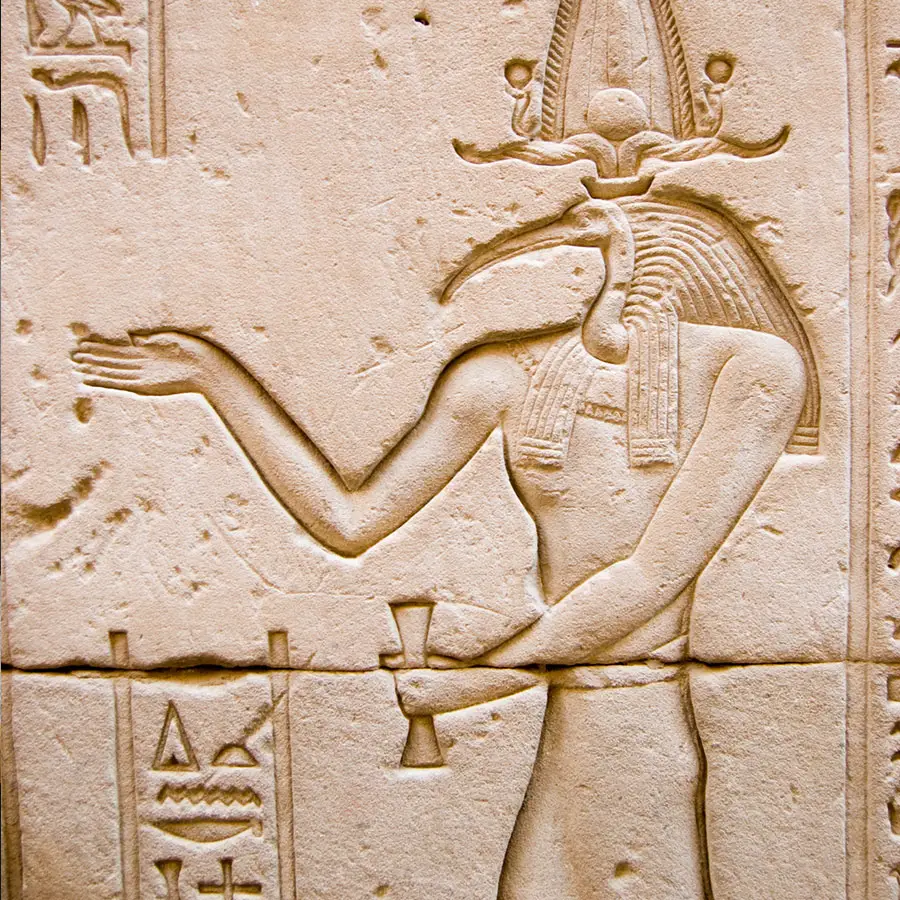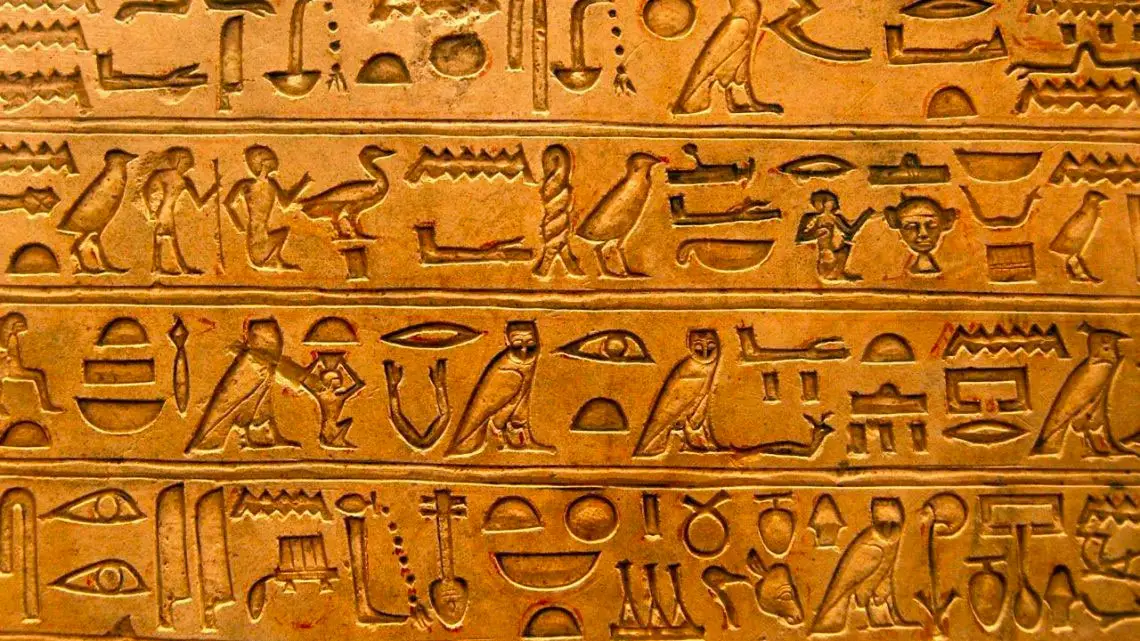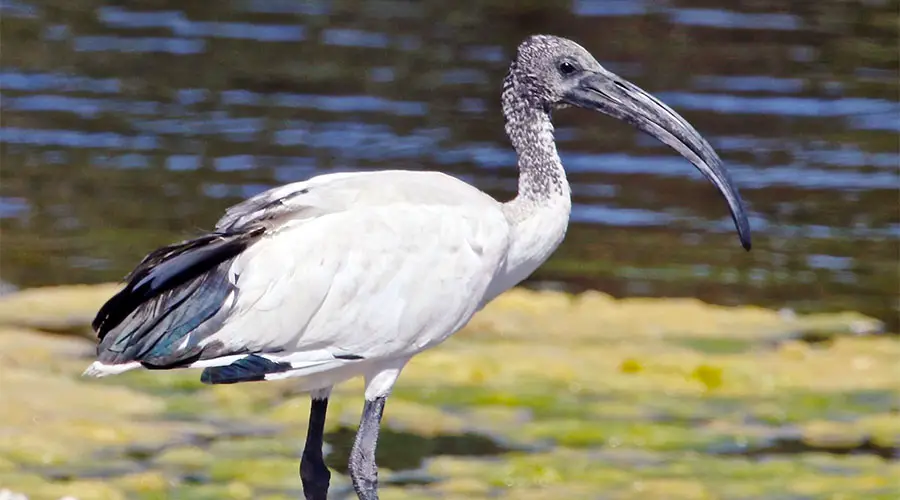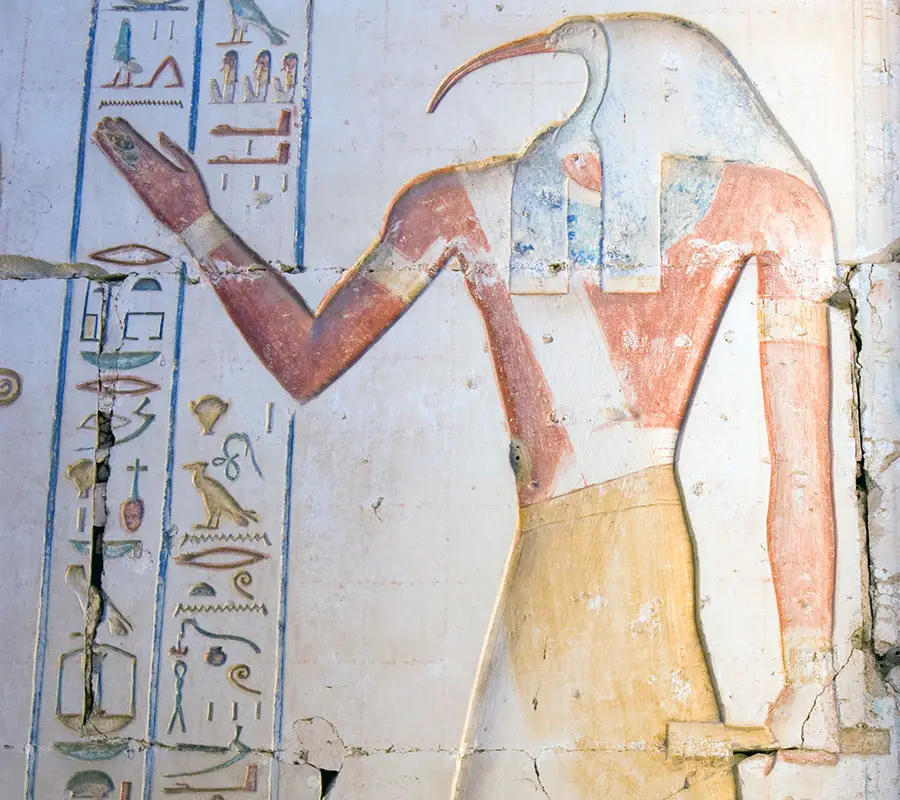In ancient Egyptian hieroglyphs, Thoth the Egyptian god is depicted as having the head of an ibis bird. In this article, we are going to look at why Thoth is portrayed this way.
Thoth is depicted as having the head of an ibis bird because the ibis bird is an incarnation of Thoth, and both are essentially the same entity. In Egyptian mythology gods have corresponding animals, that are like the presence of the god manifested in animal form. Thoth and the species are interconnected by creation, and share many characteristics and traits.

The Image of Thoth as an Ibis Comes from Ancient Hieroglyphs
Hieroglyphs were a system of writing used by ancient Egyptians. They have been referred to as ‘holy writing’ by latter scholars for their remarkable aesthetic quality. Hieroglyphs were carved into the walls of temples and pyramids, as well as written on papyrus, a form of paper ancient Egypt had.
Legendary Origins of Hieroglyphs
Thoth is considered to be the god who invented and brought reading and writing to the Egyptians, who called writing “the words of the gods”. He wanted to help the humans evolve their consciousness, but had a difference of agreement with Ra. Ra thought that giving writing to people would make them rely upon writing and lose their memory. As a compromise, Thoth gave writing to the scribes, who were high status members of society who lived in special temples and dedicated their lives to knowledge.

The Ibis Bird is a Long-legged Wading Bird
Ibis birds have long thin bills that they use to forage and probe. Standing about 30 inches, they live in muddy grasslands and shallow water in Africa and the Middle East. Ibis birds live in flocks, and during flight, they form V-formations. In current times, the species is no longer found in Egypt. There are 29 different subspecies of the ibis bird, and they exist in different colors and sizes. This can include white and brilliant scarlet colors. They typically live 15-20 years, and eat mostly insects.

Thoth the God of the Moon and Writing
In Hieroglyphs, Thoth is seen holding papyrus reeds that symbolize the writing he introduced to the world. When you think about it, it’s incredible how important the introduction of writing has had on human consciousness. In his left hand he holds the ankh, the symbol of eternal life. Thoth is also considered the god of reckoning and learning. He is the interpreter and adviser to the gods, and the representative of the sun god Re.
“I heard, then, that at Naucratis, in Egypt, was one of the ancient gods of that country, the one whose sacred bird is called the ibis, and the name of the god himself was Theuth. He it was who invented numbers and arithmetic and geometry and astronomy, also draughts and dice, and, most important of all, letters.” – Socrates

Characteristics and Personality of the Ibis bird
They are quiet birds, and make very little sound. The manner in which they behave gives them a feeling of adaptability and unity in challenging circumstances.
The ibis bird lives in flocks ranging from 30 to 300 birds. They remind us of the collective wisdom of the group, and the power of the tribe, since us humans are also tribal creatures. By living, breeding, and travelling as a group, they manage to survive in very challenging ecosystems. Even the tasks of child-bearing are shared by both the male and female parents.
Thoth is Also Associated with the Moon
Another symbol of Thoth is the moon. Known as the “measurer of time”, his teachings can be seen in the regularity and cycles of the moon. As well as an ibis bird, Thoth is sometimes portrayed as a baboon holding a moon.
Above his ibis head, Thoth is depicted with a headdress of a lunar disk sitting on top of a crescent moon. It has been noted on occasion that the beak of the ibis bird is shares the same curvature of the crescent moon. The moon represents the rhythm of time, immortality and enlightenment.
The Ibis Bird Was Mummified by the Egyptians
Because of their connection with Thoth, ibis birds were considered sacred by the Egyptians, and often mummified like humans. The mummified ibis birds would be kept in temples in reference of Thoth.
Mummification was performed in order to preserve the body, which was the home for the spirit. If the body was destroyed, the spirit would no longer have a home. The ancient Egyptian idea of spirit involved three components, ka, ba, akh. The ka of the person or animal would remain in the tomb and needed to be given offerings.
Other Egyptian Gods and their Animal Counterparts
Like Thoth, the other gods and goddess in the Egyptian pantheon also have associated animals. The Nile valley was home to many types of animals, which are also present in the ancient Egyptian pantheon of gods and goddesses. For example:
The god Sobek is a fertility god associated with death and burial, has the head of a crocodile. Like the ibis birds of Thoth, crocodiles would be mummified in Sobek’s honour. Worship of this god continued well after ancient Egypt, in Roman times.
The goddess Sekhmet has the head of a lion, and is a goddess of war. She is the destroyer of the enemies of the sun god Re, and is associated with disease, healing, and medicine.
Anubis the jackal-headed god of underworld. He was focused on the care of the dead, and invented embalming, which was first done to the corpse of Osiris.
Hathor the mother goddess of the sky, women, and fertility and love, is portrayed as having cow’s horns.
Other animals seen as gods include the falcon, scorpion, the cat, crocodile-falcon hybrid, the bull, and others.
Recommended Reading
If you’d like to continue researching Egyptian mythology or any of the other topics discussed on this website, you can see which books I recommend by clicking here.

